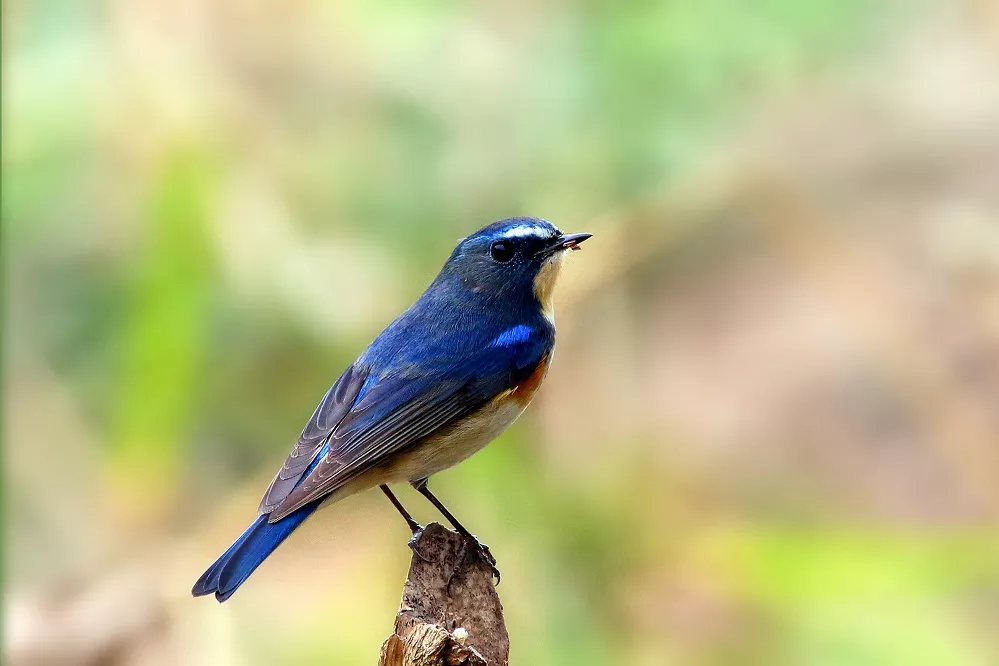The Red-flanked Bluetail, also known as Tarsiger cyanurus, is a small bird belonging to the family Muscicapidae. It is widely distributed throughout the northern hemisphere, particularly in the temperate and subarctic regions of Asia and Europe. These birds are known for their vibrant blue plumage, which makes them a favorite among birdwatchers.
- Physical Characteristics
Red-flanked Bluetails are relatively small birds, measuring around 13 centimeters in length and weighing approximately 9 to 14 grams. They have a distinct and eye-catching blue plumage on their head, wings, and tail, with a contrasting rust-colored patch on their flanks. The female birds are slightly duller in coloration and lack the bright blue head feathers seen in males. They have a relatively slender body and a pointed bill that helps them to catch insects while in flight.
- Habitat and Distribution
These birds breed in the subarctic and boreal forests of northern Europe and Asia, migrating south to winter in the Himalayas, South China, Southeast Asia, and Taiwan. During migration, they can be found in a range of habitats, including woodland edges, gardens, and parks. In their breeding range, they prefer to inhabit dense forests with a mix of coniferous and deciduous trees, often near streams or wetlands.
- Behavior and Diet
Red-flanked Bluetails are mainly insectivorous, feeding on a range of insects, spiders, and other small invertebrates. They forage on the ground and in the understory of forests, hopping from branch to branch in search of prey. During the breeding season, they may also feed on small fruits and berries.
During the breeding season, males defend territories and engage in courtship displays to attract a mate. They sing a series of melodious and high-pitched songs from perches in the forest canopy. Females build cup-shaped nests made of moss, lichen, and grass, usually hidden in dense vegetation on the ground or in low shrubs. They typically lay 4-6 eggs, which are incubated by the female for around 12-14 days. Both parents share in feeding the chicks until they fledge, which usually takes around 2-3 weeks.
- Conservation Status
The Red-flanked Bluetail is not considered to be a threatened species, with a stable and widespread population estimated at around 15 million individuals. However, like many migratory birds, they face threats from habitat loss, climate change, and hunting. Some populations that breed in Europe are at risk due to the loss of their preferred forest habitats, while populations in Asia are threatened by hunting for food and trapping for the cage bird trade.
In conclusion, the Red-flanked Bluetail is a small but striking bird that is a joy to observe in the wild. Its beautiful blue plumage and distinctive song make it a favorite among birdwatchers, while its importance as an indicator of healthy forest ecosystems cannot be overstated. Efforts to conserve their habitats and protect them from hunting and other threats are essential to ensure their survival for future generations.


 Facebook
Facebook  Instagram
Instagram  Youtube
Youtube 